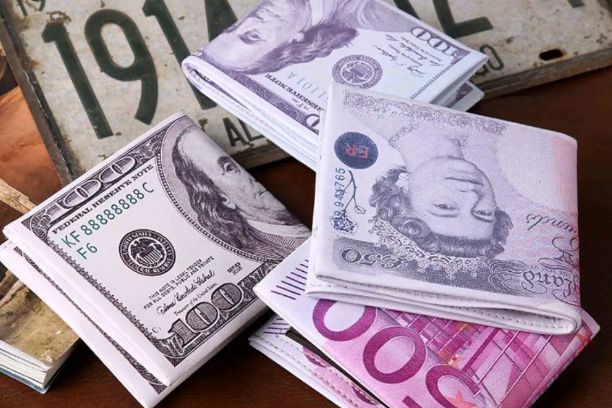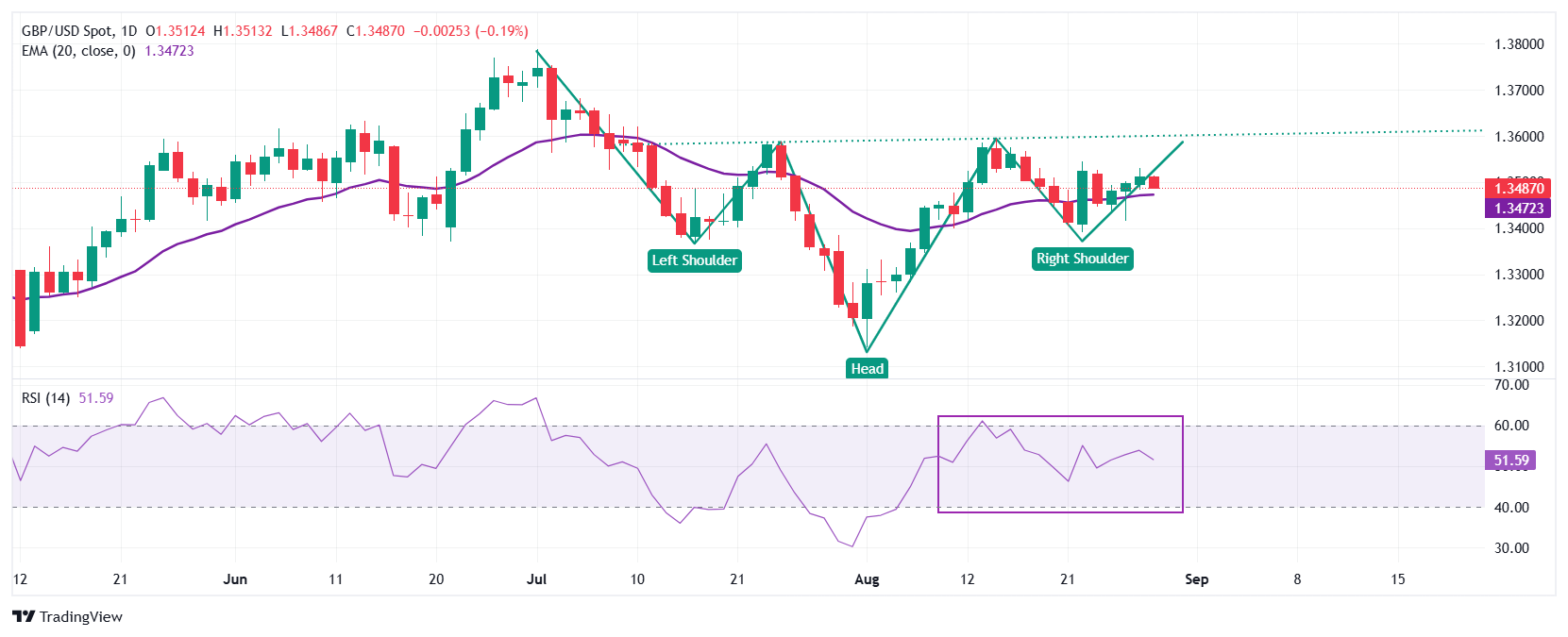
The Pound Sterling retreats to near 1.3500 against the US Dollar, ahead of key US PCE inflation data for July.
Fed’s Waller stated that he will support interest rate cuts in the policy meeting in September.
The British currency underperformed its peers this week.
The Pound Sterling (GBP) corrects to near 1.3500 against the US Dollar (USD) during the European trading session on Friday. The GBP/USD pair retreats after a three-day winning streak as the US Dollar trades marginally higher ahead of the United States (US) Personal Consumption Expenditure Price Index (PCE) data for July, which will be published at 12:30 GMT.
At the time of writing, the US Dollar Index (DXY), which tracks the Greenback’s value against six major currencies, ticks up to near 98.00.
Economists expect the US core PCE inflation, which is the Federal Reserve’s (Fed) preferred inflation gauge, to have risen at a faster pace of 2.9% on year against 2.8% in June, with the monthly figure rising steadily by 0.3%.
Majorly, the PCE inflation remains a key driver for market expectations for the Federal Reserve’s (Fed) monetary policy outlook. However, its impact is expected to be limited this time as rate-setting members have become more concerned about growing labor market, which stemmed after a sharp downward revision in Nonfarm Payrolls (NFP) data for May and June.
On Thursday, Fed Governor Christopher Waller also warned of downside labor market risks, while stating that he will support a 25-basis point (bps) interest rate cut in the September policy meeting. “While there are signs of a weakening labor market, I worry that conditions could deteriorate further and quite rapidly,” Waller said, Reuters reported.
Daily digest market movers: Pound Sterling underperforms its peers this week
The Pound Sterling underperforms its peers on Friday amid a light United Kingdom (UK) economic calendar week. The British currency remains lower even as market experts believe the Bank of England (BoE) will not cut interest rates for the remainder of the year.
This week, BoE Monetary Policy Committee (MPC) member Catherine Mann also argued in favor of holding interest rates at their current levels for a longer period, with inflationary pressures turning out to be persistent.
"A more persistent hold on Bank Rate is appropriate right now, to maintain the tight-but-not-tighter monetary policy stance needed to lean against inflation persistence persisting," Mann said, Reuters reported.
Going forward, the major trigger for the Pound Sterling will be the United Kingdom (UK) Retail Sales data for July, which will be published next week. Economists expect the Retail Sales data, a key measure of consumer spending, to have grown at a moderate pace.
Meanwhile, growing doubts over the dominance of the US Dollar are expected to provide support to the GBP/USD pair. Financial market participants have become concerned over the safe-haven appeal of the US Dollar due to continuous attacks by US President Donald Trump to the Fed’s independence.
This week, US President Trump released the termination letter of Fed Governor Lisa Cook over mortgage allegations. In response, Cook has filed a lawsuit, citing them as baseless, to keep her job, and the hearing on the motion is scheduled for 14:00 GMT on Friday.
In past, US President Trump has attacked the Fed’s independence several times by threatening Chair Jerome Powell that he will lose his job if he does not lower interest rates. However, Trump praised Powell after his speech at the Jackson Hole Symposium on Friday, in which he surprisingly delivered a dovish interest rate guidance.
Technical Analysis: Pound Sterling sticks to 20-day EMA

The Pound Sterling falls slightly to near 1.3500 against the US Dollar on Friday. The overall trend of the GBP/USD pair remains sideways as it stays close to the 20-day Exponential Moving Average (EMA), which trades around 1.3468.
The Cable is also forming an inverse Head and Shoulder (H&S) chart pattern on the daily chart, which leads to a bullish reversal after a corrective or downside move. The neckline of the H&S pattern is placed around 1.3580.
The 14-day Relative Strength Index (RSI) oscillates inside the 40.00-60.00 range, suggesting a sharp volatility contraction.
Looking down, the August 11 low of 1.3400 will act as a key support zone. On the upside, the July 1 high near 1.3790 will act as a key barrier.
* The content presented above, whether from a third party or not, is considered as general advice only. This article should not be construed as containing investment advice, investment recommendations, an offer of or solicitation for any transactions in financial instruments.


